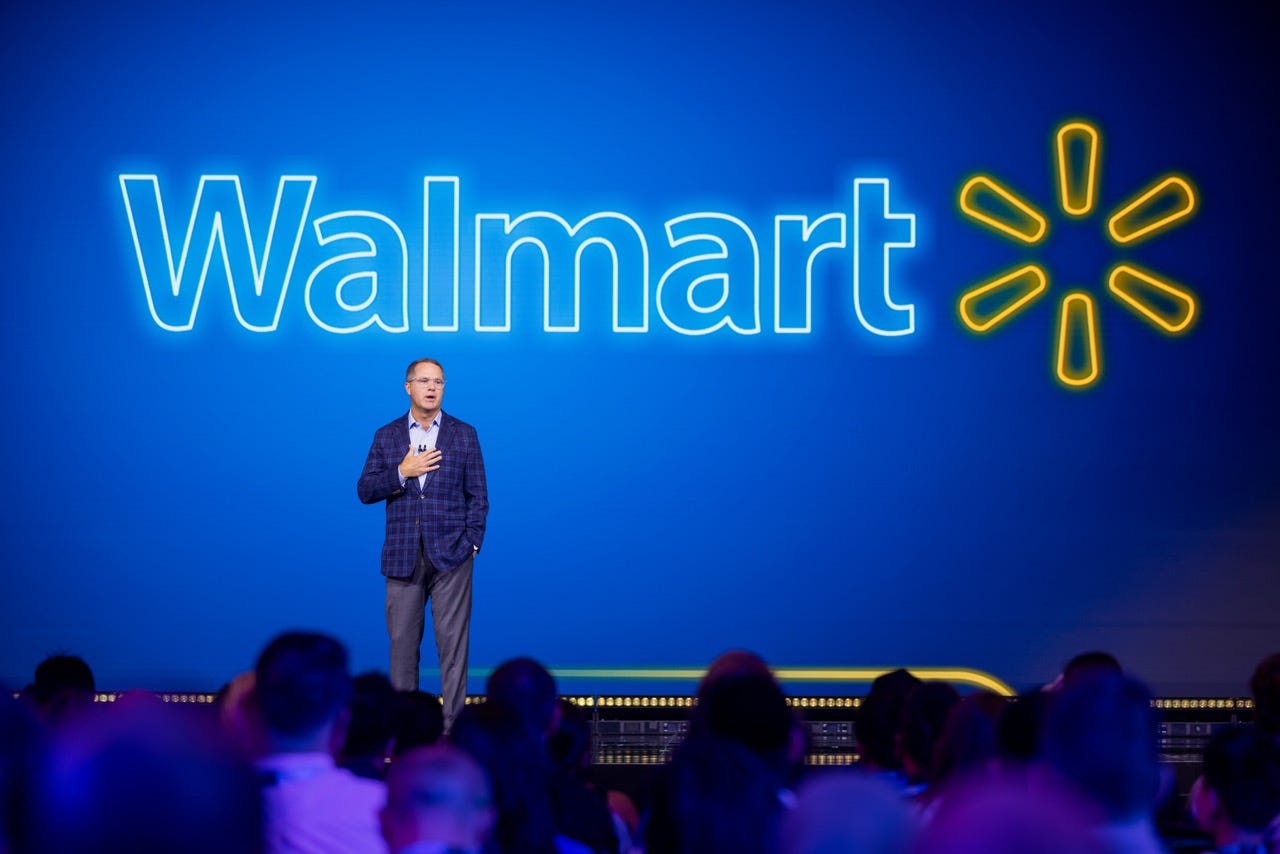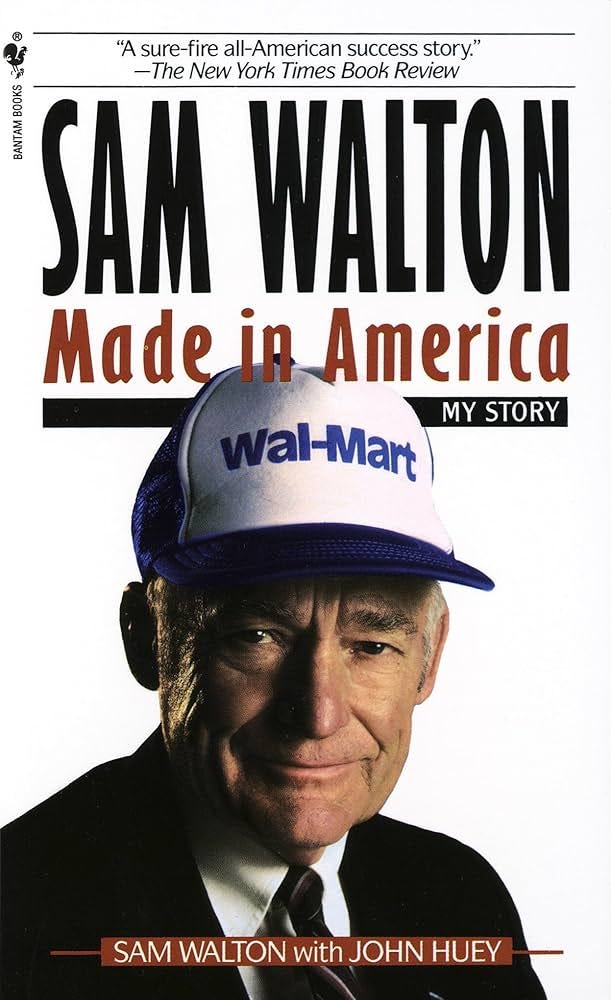The Behemoth of Bentonville
How Walmart grew from simple merchant to marketplace-as-a-service and redefined global retail
Last month, we previewed a series we’d be working on called the The Top 500 Most Important Companies in Global Food and Beverage. I like to think of it as a collection of rough drafts for a future book on the industry. Here we go.
“Top-X” lists usually start from the bottom up, moving gradually from the most obscure to the most recognizable. Not this one. We’d rather inch our way towards much lesser-known players over time. Still, while beginning with the biggest and most influential companies in the industry, we’ll explore a few lesser-known facts with fresh, perhaps alternative perspectives.
We begin with Walmart, #1.
No company casts a shadow over the world of food and consumer goods quite as large. What began in 1962 as a single location in Rogers, Arkansas, has since become the largest company in the world by revenue (over $600 billion in 2023) and the world’s largest private employer (2.3 million+ employees). It’s said to be the world’s largest seller of everything from organic milk and cotton products to bananas to sporting goods. In the US alone, it operates 4,606 Walmart locations and 600 Sam’s Clubs, plus another 5,454 stores globally — a combined 1 billion+ square feet of retail space across a total of 10,660 retail units. It also operates dozens of the most sophisticated distribution centers in the world, many of which boast over 1 million square feet. Today, 90% of the US population lives within 10 miles of a Walmart or Sam's Club. And it’s estimated to have an almost 25% share of all US grocery spending — equal to its next biggest competitors Kroger (10%), Costco (9%), and Albertson’s (6%) combined.
And it’s getting bigger. Last quarter, Walmart’s revenue increased 5%+ to over $169 billion. International sales surged 12% (FX-neutral) driven by growth in India (Flipkart), Mexico (Walmex), and China (Walmart + Sam’s). E-commerce is a major growth driver too with sales up 22% in the US, fueled by store-fulfilled pickup and delivery (+50% YOY), third-party marketplace (+42% YOY), and its new Walmart Connect advertising platform (+26% YOY) which we’ll discuss later. Walmart is flexing its ability to adapt and thrive in an increasingly omnichannel retail environment, especially as it emerges from the chaos (and investment opportunities) presented by COVID. Yet in recent years, even before COVID, Walmart has been quietly transforming into something else entirely — beyond a mere merchant of goods. We’ll explore this in more detail, but first, how Walmart came to be…
Made in America.
In so many ways, Walmart’s rise to unparalleled size and influence mirrors that of the country that made it possible. Walmart is a proxy for the United States itself — entrepreneurially (the inspiring story of Sam Walton), economically (clear leader in global consumer goods), technologically (pioneered UPC, RFID, and data communications technology in retail and is now the #1 US online grocery player), and geopolitically (leveraged its central US geography as a launchpad to national distribution dominance and then global retail hegemony). There’s a reason Sam Walton titled his autobiography “Made in America.”
Walmart’s official founding year is 1962, but the story actually begins 20 years earlier. After graduating University of Missouri in 1940 at 22, Sam Walton landed at J.C. Penney as a management trainee before leaving for the Army Intelligence Corp during WW2. When the war ended in 1945, Walton became a franchisee of Butler Brothers — at the time one of the largest wholesalers in the US — by acquiring a single Ben Franklin “five and dime” store in Arkansas. At the time there were thousands of Ben Franklin variety stores around the country, so Walton wasn’t on many radars. By 1949, Walton’s store was the #1 location in Arkansas generating ~$250,000 in revenue or about $3.3 million in 2024 dollars. Yet, come 1950, Walton is kicked out by his landlord. He and his wife Helen have four young kids at this point. Talk about stress! So after driving around Arkansas searching for a new home, Walton met Luther Harrison, a variety store owner in Bentonville. Walton bought the store, expanded it, and renamed it “Walton’s 5&10” — but still operated within the Ben Franklin franchise system. By 1960, Walton owned eight stores generating $1.4 million in sales (~$15 million in 2024) across Arkansas and Missouri.
These early years were a testing ground for Walton’s pioneering “low-cost” retailing strategies, which beget scale which begets more efficiencies and so on. Walton would install random-colored mismatched floor tiles because they were cheaper and made no apparent difference to his customers. In 1962, Walton and his brother Bud went fully independent and opened the first “Walmart” with over 15,000 square feet compared to their much smaller Walton’s 5&10 stores. But it’s important to understand — much like any other company or idea and very much like the United States — Sam and Bud’s ideas weren’t entirely novel. They took the best existing ideas and innovations and improved upon them to build something large and powerful.
Walmart was inspired, in part, by an existing “big-box” chain called Anne & Hope in New England. Anne & Hope was founded 10 years earlier and was one of the first department stores to pioneer self-service (i.e. no sales personnel guiding you around the store, hence more efficient and low-cost). It was also one of the first to offer shopping carts to customers. Now consider the name “Walmart.” This was inspired by another retailer — also founded about a decade earlier — called FedMart. A bit like GEICO, Fedmart started out only serving government employees and operated membership-based discount department stores. The founder of Fedmart was a man named Sol Price, today considered the founding father of warehouse retailing. Price later founded Price Club in the 1970s which then merged with Costco in the 1990s. Costco co-founder and former CEO James Sinegal started his career as a bagger at Fedmart and was later mentored by Price. In fact, Price is also said to have convinced Arthur Blank to start a retail business of his own after Blank was fired from his job at a hardware chain. That retail business that he went on to co-found is called Home Depot. All of these men — Walton, Sinegal, and Blank — were inspired and guided by what and who came before.
Most everything I've done I've copied from somebody else. - Sam Walton
I learned a lot from Sol Price, a great operator who had started FedMart out in San Diego in 1955. I guess I’ve stolen… I actually prefer the word ’borrowed’ as many ideas from Sol Price as from anybody else in the business. I really liked Sol’s FedMart name so I latched right on to Walmart. - Sam Walton
Two years later — in 1964 — Walton unveiled the first official Walmart logo — with “frontier” style font. It was not only an homage to its rural American roots, but also in retrospect, symbolic of the uncharted unknowns into which the Waltons were venturing — unknowns they would themselves grow to define and ultimately dominate on a global scale. While Sam and Bud Walton have since passed, the Walton family remains 51% owner of the company. This makes them the wealthiest family on Earth with a combined net worth of at least ~$350 billion.
Rapid fire record setting. Walmart goes public in 1970. It has 38 stores across 5 states generating just $44 million in revenue. Throughout the late 60’s, 70’s, and 80’s it pioneers the use of computing in retailing, from daily point-of-sale (POS) reporting and UPC scanning to inventory tracking to employee payroll processing. In 1972, it began building its now-ubiquitous network of distribution centers. It also introduces its famous EDLP program — “Every Day Low Prices”. In 1974 it opens its 100th store — in Bentonville of all places. In 1975 Walmart is named the #1 largest general merchandise retailer in the US and now has 125 stores generating $340 million. Pharmacies and auto centers were introduced in 1978. The following year Walmart exceeds $1.2 billion in sales across 276 locations. Sales then double in just two years to $2.4 billion with 491 stores in 14 states. Sales hit $3.4 billion in 1983, the same year the first Sam’s Club opens in Oklahoma. By 1985, Sam Walton is American’s richest man. His 882 stores generate $8.4 billion. The business will only be 25 years old two years later in 1987, at which time it will generate almost $16 billion — a 40%+ revenue CAGR since going public which is largely unprecedented in physical retail.
Walmart reinvents itself in 1988. Two things happen in 1988 that had never happened before. Walmart launches its own satellite communication network linking all of its locations with HQ. And then it creates the “Supercenter” and opens the first one in Missouri. The Supercenter changed everything and altered the future of global retailing forever. It redefined convenience, pricing, and product assortment by combining its existing general merchandising business with a large-format grocery store under the same roof. No retailer in the world had done this at this scale, and only Walmart was capable of executing on such ambition. By 1990, Walmart is the #1 retailer in America overall with over $32 billion in sales.
Goes vertical in grocery. The company’s foray into grocery increased its supply chain complexity dramatically. It needed to strengthen its distribution network for greater resiliency to handle faster-moving and shorter-lived consumables like food and beverage. So in 1990 Walmart acquired McLane, one





